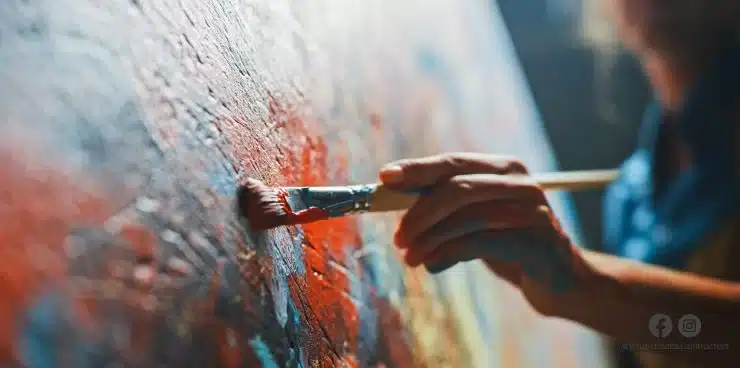
The definition of showmanship is the art and science of persuasion. It’s the ability to capture an audience’s attention and hold it captive while delivering a message. It’s a skill that you can apply in many different ways, from marketing and advertising to customer service and user experience.
Storytelling is one of the oldest and most effective forms of showmanship. By sharing stories, we can connect with others on a deeper level, create shared experiences, transfer information across generations, and build relationships. It could be a personal story about our lives or a brand story about how our products or services were used to defeat demons. Regardless, knowing how to tell a story has the power to engage and inspire people like nothing else.
There are certain elements that all significant types of stories have in common. They have a beginning, middle, and end. They have conflict and resolution. They have characters, the people that we can relate to and root for. Most importantly, they have a moral we can take away with us and subscribe to.
When creating a story, it’s essential to keep these elements of storytelling in mind. But it’s also important to remember that the best stories are those that are personal and authentic. The more real and relatable your story is, the more impact it will have on your audience.
So how can you tell a great story? Here are a few tips:
Storytelling & Showmanship
“Storytelling is a form of selling. It allows us to use the old and familiar as metaphors to help us determine the right course of action when facing the new and different. Choose the story, and you control the metaphor.”
— Roy H. Williams
If storytelling is a form of selling, showmanship is the art of persuasion. It’s about creating an experience that is so compelling and immersive that your audience cannot help but be drawn in.
“Showmanship and storytelling don’t change objective reality, but they do change perceptual reality.”
— Roy H. Williams

Whether it’s a performance, a presentation, or just a conversation, showmanship and storytelling are about creating an experience. One that will stay with your audience long after the event is over.
Storytelling
Storytelling is the ancient art of using narratives to share experiences and traditions. It is a way of communication used since the dawn of humankind.
You can use storytelling for entertainment, edutainment, or persuasion. You see it with the magician, for example, when they give you the slow reveals. First, it’s the bunny rabbit out of the hat, and then it’s the beautiful assistant disappearing. And, finally, it’s the man behind the curtain who is really running the show.
What has happened here is that the magician has taken you on a journey. He made a creative experience for you that is memorable and meaningful. In other words, he has used his storytelling skills to create a lasting memory and impart knowledge or wisdom along the way.
That is what all great storytellers do. They take their audience on a journey, creating memories and experiences that are both enjoyable and enlightening.
The best stories are those that are rich in detail and sensory description. They transport us to another time and place and make us feel like we are part of the action.
Great storytellers are also master showmen. They know how to capture our attention and hold our interest. They know how to use humor, drama, and suspense to keep us engaged.
In recent years, storytelling has become increasingly popular as a marketing tool. Use marketing storytelling to connect with the customer experience on a deeper level and create an emotional connection.
Use a marketing story to sell products and services, too. You can use storytelling in advertising to promote a brand or company or to raise awareness about an injustice in your industry you have chosen to correct.
However, stories are not just for marketers. Anyone who wants to communicate more effectively and connect with their audience on a deeper level can use a storytelling campaign.
Showmanship
Showmanship is the art of putting on a show. It’s about creating an experience that is entertaining and memorable. Showmanship can make even the most ordinary products and ideas seem exciting when done well. The zest and pizzazz can take a presentation from good to great.
Returning to the magician example: Showmanship is also about the man behind the curtain. It’s the art of creating the illusion. A good magician makes it look like he is doing the impossible and takes the ordinary and makes it extraordinary.
Like stories, showmanship can be used to sell products, promote ideas, or entertain an audience. And like stories, not everyone is a natural-born showman. But with a bit of practice, anyone can learn how to add a little extra flair to their presentations.
So how do you add showmanship to your storytelling? Here are a few tips:
- Be passionate about your story. If you’re not excited about it, your audience won’t be either.
- Use props and visuals to help bring your story to life.
- Use your voice and body language to add drama and interest.
- Do the unexpected. Delight comes from surprise. An unexpected twist or ending.
- Practice, practice, practice! The more you do it, the better you’ll become at adding that extra spark to your stories.
You can use showmanship in sales and marketing and in any situation where you want to capture attention and make a lasting impression.
How Memories and Experiences are Created
 A good story can make or break a product. It’s what sells the customer experience, and it’s what customers remember long after they’ve used your product.
A good story can make or break a product. It’s what sells the customer experience, and it’s what customers remember long after they’ve used your product.
That’s why storytelling in advertising and marketing is so important. A well-told story can make your product more relatable, human, and memorable.
It can also help you stand out from the competition. Your storytelling campaign will make your product different in a world where everyone is selling the same thing.
So how do you create a good story?
You could tell a story about how one of your customers had an impossible to find leak, only for you to use your special techniques to discover and fix the problem quickly. You could tell a story about how ridiculously salesy your competitors can be and how you send out your real Techs, not salespeople, to solve the problem the right way. Or you could tell the story about your JetBlaster 2000 blower door tester that helped Mrs. Customer reduce the size of her new system with proper insulation.
Be creative, be unique, and be memorable. Make sure it’s new, interesting, and different no matter what story you tell. Your customers will remember you for it. Marketing storytelling will have you standing 600 ft above your competition in no time.
As the great Roy H. Williams said, “Showmanship and Storytelling Don’t Change Objective Reality – They Change Perceptual Reality”.
The Proceedings of the National Academy of Sciences recently published a wine study. Researchers from the California Institute of Technology and Stanford’s business school found the pleasure we get from wine is proportional to its price.
“The story you tell about the wine affects how it tastes.”
— Roy H. Williams
The quote means that the more expensive the wine, the more we enjoy it – not because it’s necessarily better quality, but because our expectations are higher. We’re telling ourselves a story about how great it will be, and that story affects our perception.
Whisk(e)y Sommelier
An excellent example of the wine explanation above is the whiskey sommelier marketing designation created by The Wizard Academy. Their whiskey sommelier courses are run by the same magic that makes people believe cheap wine is fancy.
I don’t claim to have any whiskey knowledge. In fact, none of the Wizards involved in The Whiskey Marketing School are in the whiskey industry. Yet their courses allow people to receive a level five whiskey sommelier with two years of classes. What would typically take many more years and much more experience can be learned in a short period by those with the aptitude for it.
Why?
They make the whiskey course seem more expensive by charging more. Clients want to feel like they’re getting something valuable, so they give them a story to make them remember the experience.
The key is understanding how memories and experiences are created. It’s not just about the whiskey. It’s about the stories we tell ourselves and others about the whiskey. It’s about showmanship. It’s about making people believe they’re experiencing something special, even if it’s just a $20 bottle of bourbon.
What’s important is not what actually happened but what we remember happening. Our memories are shaped more by our expectations than by physical reality.
To learn more about how memories and experiences are created, check out the courses at The Whiskey Marketing School. They can teach you how to be a master storyteller and showman and create unforgettable experiences for your customers or clients.
Angel Skating™
Angel Skating™ is an organization whose mission is to popularize artistic roller skating through showmanship and storytelling. The goal is to teach skaters to use their art to the best of their abilities, to be in the Olympics of roller skating.
It was founded by Wizard of Ads™ Australia director Craig Arthur. His daughter was in the sport, and he thought it wasn’t packaged or promoted appropriately worldwide, which is why he founded the organization.
Showmanship and Storytelling– Packaging and Promotion
“Packaging and promoting are just different names for showmanship and storytelling.
Angel Skating™ was born before the sun went down. An official logo, a cartoon character mascot, a series of domain names and the rules of advancement through a series of “elegance levels” were all agreed upon within 36 hours. It took all a Tour of Scotland and a comical comment from Indiana Beagle.
Showmanship and storytelling – packaging and promotion– are what whiskey tasting and roller skating have in common with what you do.
And now you know what we do.”
– Roy H. Williams
Now that you know what we do, do you need help with what you do? Particularly with your marketing or branding strategy for your business? Then book a call with Ryan Chute of Wizard of Ads® today.
- Futuristic Game for the Ad Masters - July 11, 2024
- Classical Conditioning: Pavlov’s Dog in Advertising - June 20, 2024
- Hear, See, Speak No Advertising - June 9, 2024
